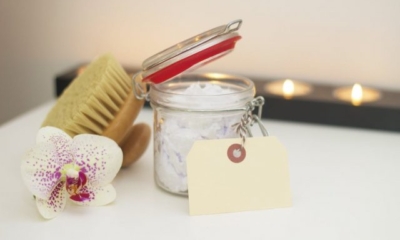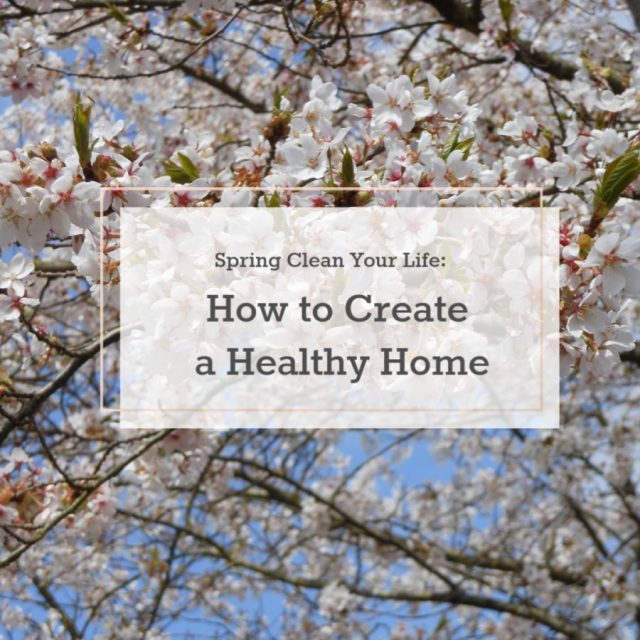The Benefits of Bathing: How to Turn Tub Time Into a Health-Boosting Ritual

In an ideal world, your home should be a safe haven where you can relax and recharge after a busy day. It’s the place where you make happy memories laughing and playing, and share fresh meals with your loved ones.
A healthy home can be the foundation of a healthy lifestyle. Unfortunately, there could also be hidden health hazards lurking around the house, from dangerous pollutants to dust-collecting clutter.
Spring is the traditional time to freshen up your living space after a long winter of being stuck indoors. And while you’re in the cleaning spirit, it’s also a perfect opportunity to create a healthier home for your family, with a few adjustments and some new routines.
Follow this short step-by-step guide to eliminate common household toxins, make your home sparkling clean and turn your brownstone into the cornerstone of a healthy life.
Chemicals in home materials, pesticides, molds, lingering tobacco smoke and even seemingly innocent dust on the shelves can pose a risk to your health. Reducing your exposure to these pollutants is the first – boring but necessary – step to a healthy home.
Did you know that indoor air is usually far more polluted than outdoor air? Shocking right, especially since most people spend 90% of their time inside buildings. Indoor air pollution is actually ranked among the top five environmental risks to public health. So what can you do to improve the air quality inside your home?

The kitchen is often the heart of the home, where your family gathers around for a healthy meal. So how can you make your food preparation and consumption as safe as you can?
Electromagnetic fields (EMF’s) radiated by cell phones and wireless internet have become an unescapable part of modern life. If and how the constant exposure affects our health is still unclear, but it’s still a sound idea to lessen the potential impact of EMF’s by creating a sleep sanctuary. Turn off your wifi at night and put your cell phone on airplane mode, preferable not next to your head for 8 hours straight. If you use the alarm on your phone to wake up, consider buying an old fashioned alarm clock or kick your snooze habit by laying your cell in another room.

Clean house, clean mind. Don’t tell your mom, but she actually had a point when she told you this growing up. Research found that having clutter around you distracts your mind, making it harder for you to focus on your work and leaves you feeling stressed.
Decluttering and re-organizing your home demands some effort at first, but saves you a lot of time and energy cleaning, tidying up and searching for lost items in the long run. You could use William Morris’ quote as your motto for deciding which belongings you should keep or throw/give away: “Have nothing in your house that you do not know to be useful, or believe to be beautiful.”
Some declutter tips for a healthy home:
For more tips on conquering your mess or embracing minimalism at home, read these 18 five-minute decluttering tips or this simple guide to a clutter-free house.
Time to get your rubber gloves on for some traditional Spring cleaning!

It takes more than clean surfaces and organized cupboards to make a healthy house a home.
Have one living area where you can relax and recharge – a room, a corner or just a comfy chair with a blanket and a side table to put down your cup of tea. Hang photos of cherished moments, inspiring art or motivational quotes where you can see it every day.
Bring the outdoors indoors. Open your windows for some fresh air. Adorn your living room with flowers and air-purifying plants. Let the light in. Move your couch into a “summer position”, so you can stare outside instead of facing the TV or fire place.
Swap synthetic home fragrances for naturally scented candles or use essential oils in a diffuser. Lay a lavender sachet in your linen closet to give your sheets that lovely smell.
But mostly, make your own upgrades to freshen up your home in any way that boosts your emotional and physical well being.
Perhaps this guide to create a healthy home has made it sound like you can safely eat off the floor at my house. Uhm, no. Sadly my mum has not passed on her domestic goddess genes to me. And trying to tidy up or getting any chores done with a little one around looks exactly like this.
But I am aware of how my living environment can affect my health and mood in either a good way or a bad way. So this article was written as part of my own step-by-step Spring cleaning. I may have to tackle this process one area or 20-minute session at a time, but hopefully I’ll end up with a shiny and healthier home before Summer arrives.
So tell me, what have you done recently to create a healthy home? Do you know any cleaning or organisation hacks to save some time and energy?
For more expert advice on how to create a healthy home, check out these round-up tips from Porch.
If you enjoyed this article, you might also like: